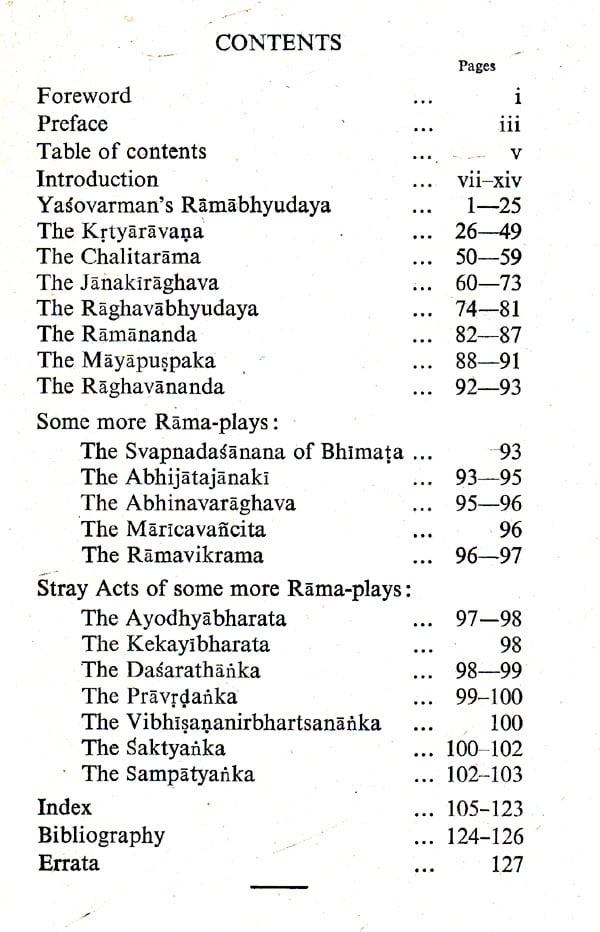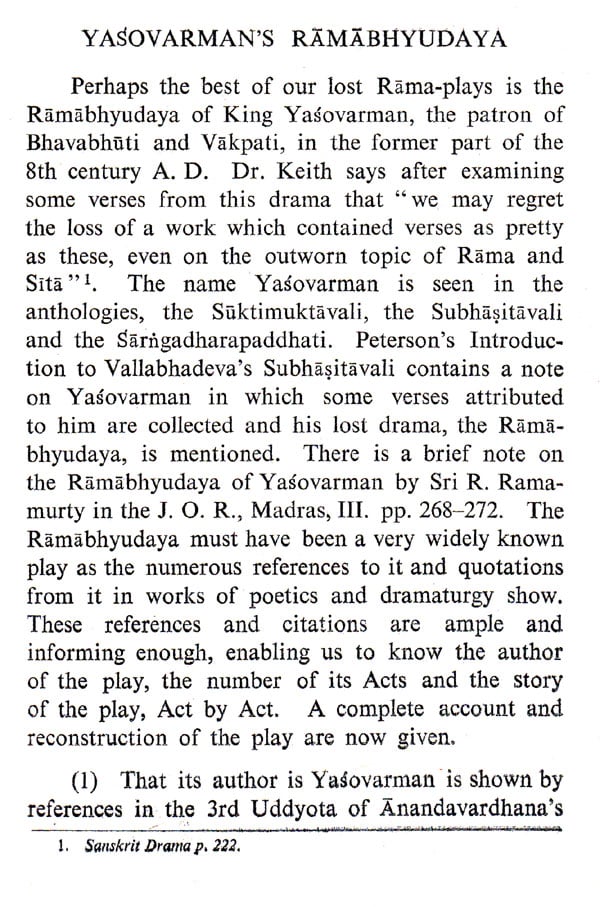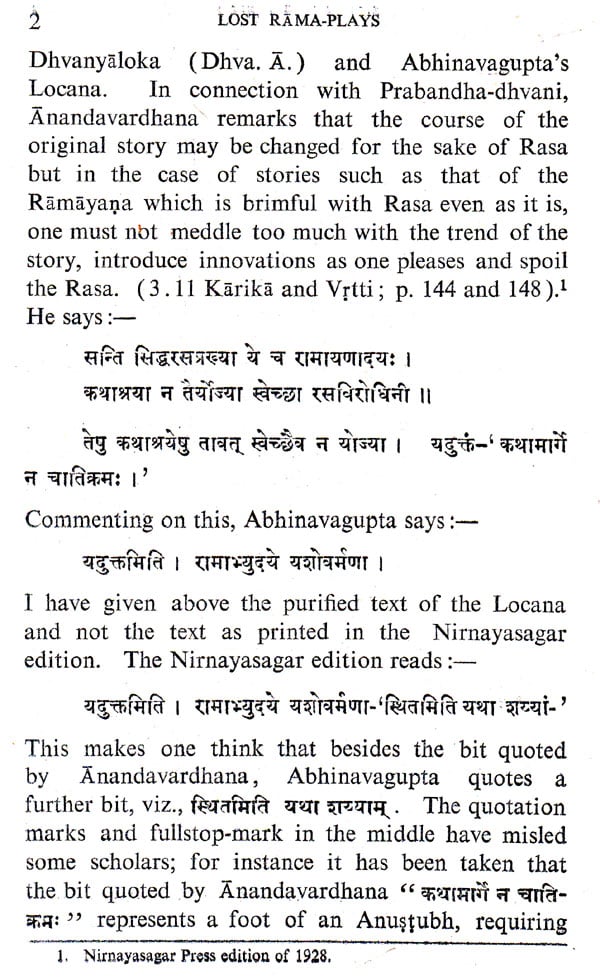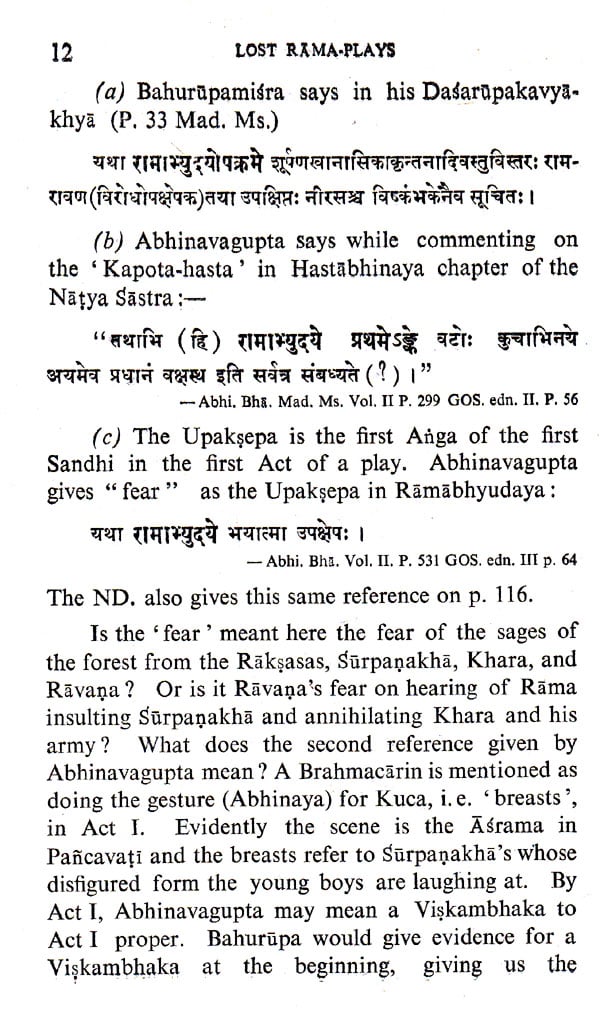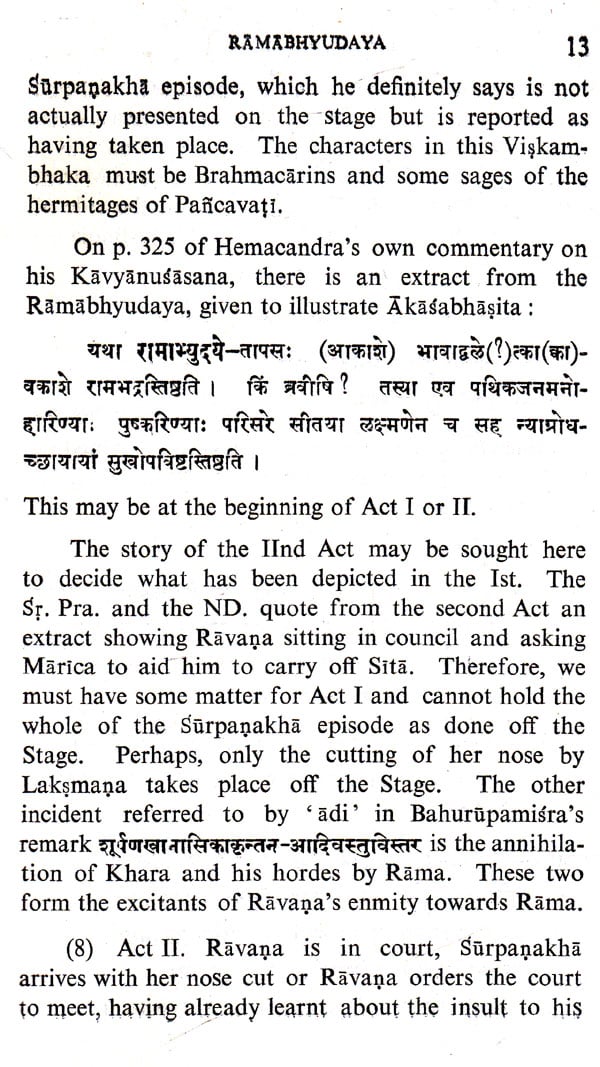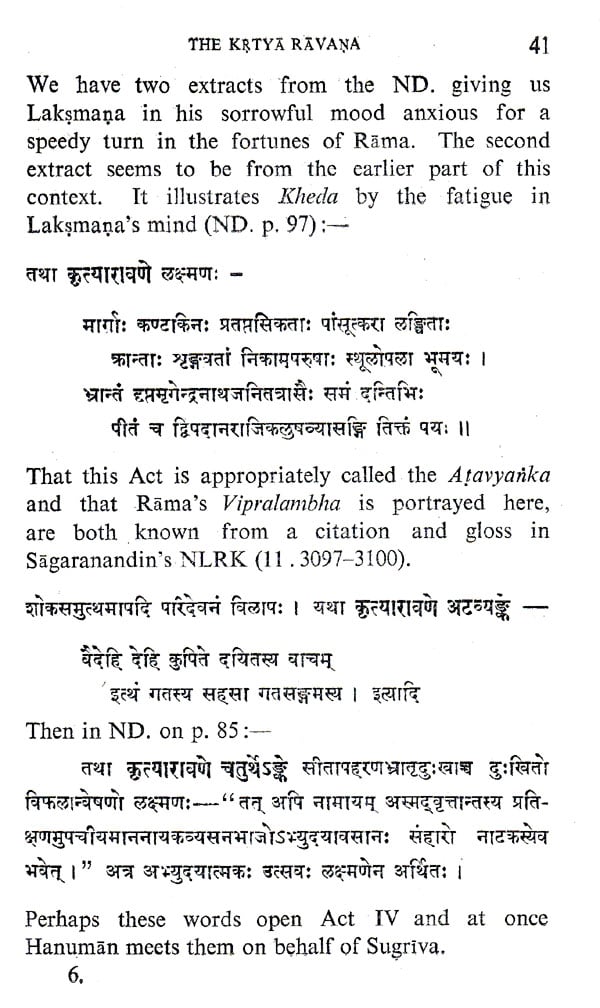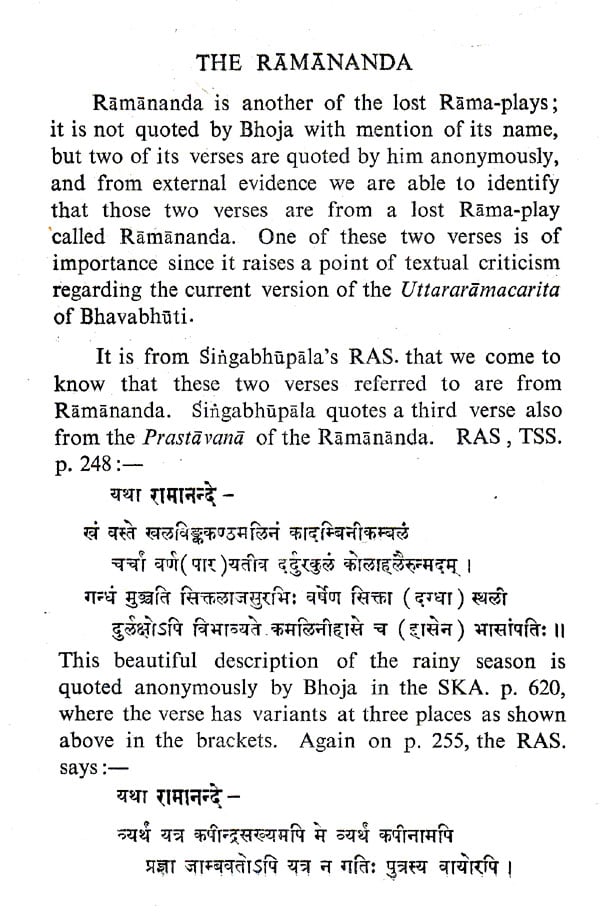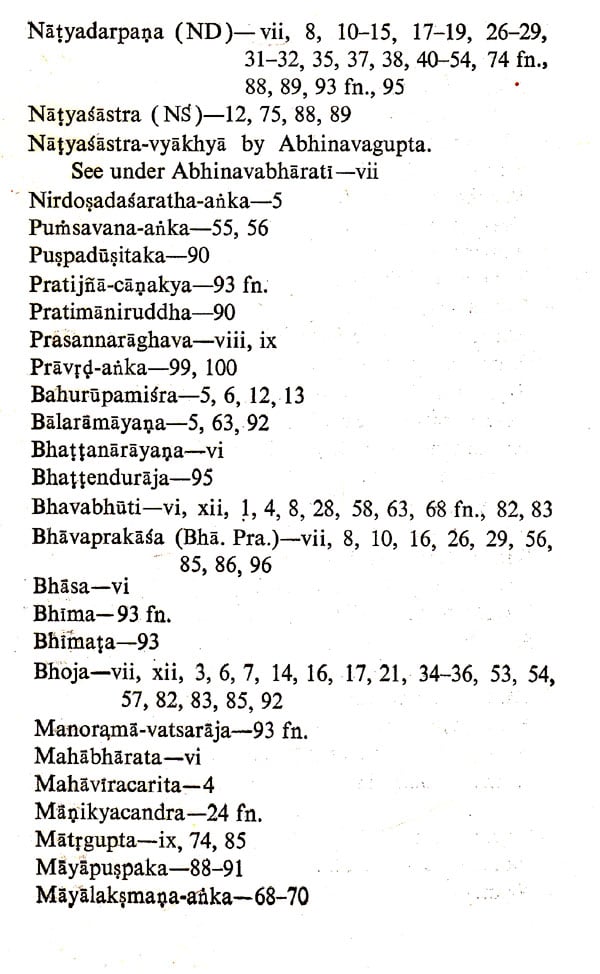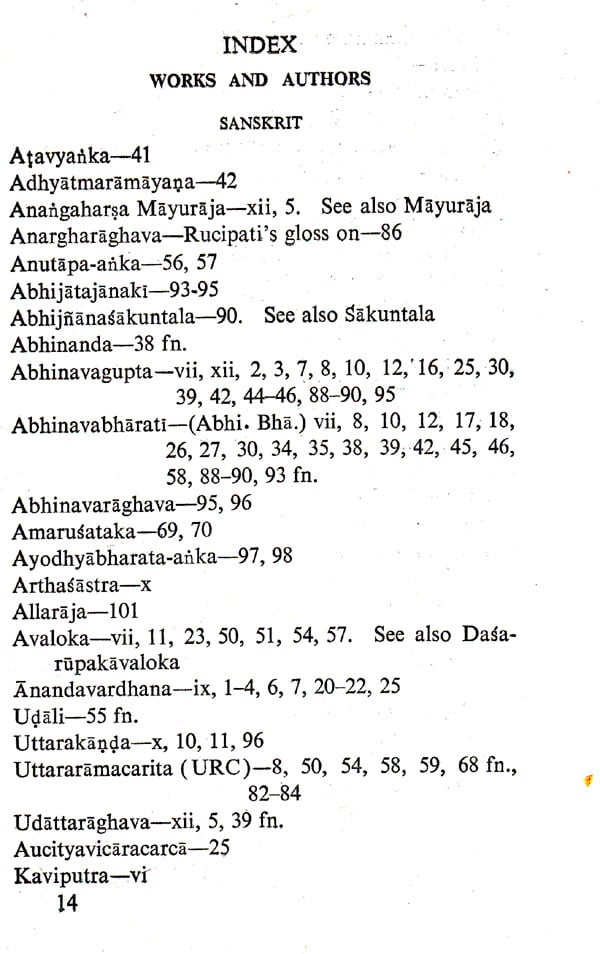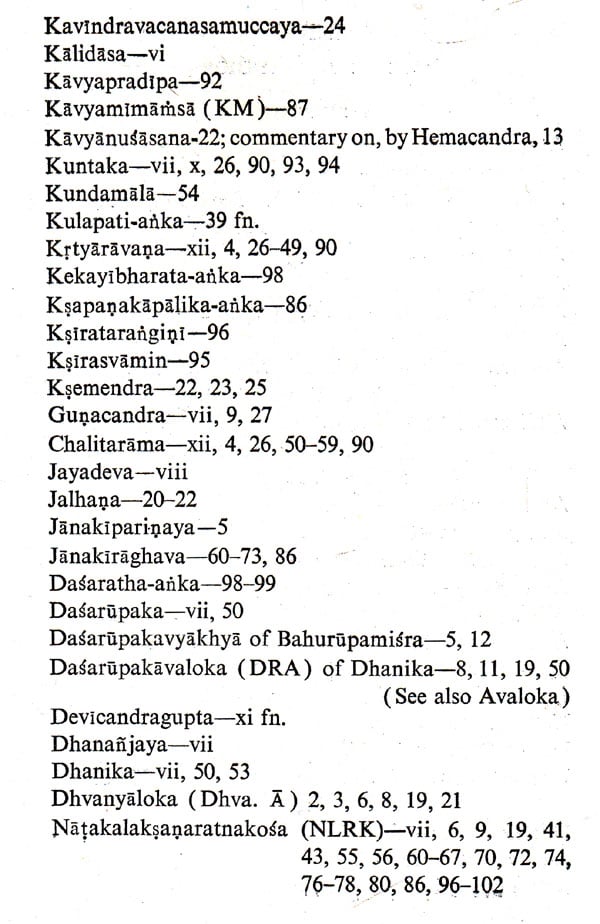
Some Old Lost Rama Plays- Lectures Delivered in The Annamalai University (An Old and Rare Book)
Book Specification
| Item Code: | NAY028 |
| Author: | V. Raghavan |
| Publisher: | Dr. V Raghavan Institute of Performing Arts, Chennai |
| Language: | English |
| Edition: | 1961 |
| Pages: | 148 |
| Cover: | PAPERBACK |
| Other Details | 8.50 X 5.50 inch |
| Weight | 160 gm |
Book Description
The author of these lectures has gone through the vast mass of such illustrative literature, in print as well as in manuscript, and collected together all the available references to Rama-dramas, lying scattered in them. Steeped in the technique of the Sanskrit dramatic lore, the author has, further, with true insight and critical acumen, fixed the references in appropriate places, and eventually from out of these stray and isolated pieces, has succeeded in evolving_connected stories full of dramatic interest. Of such resurrected Rama-plays, eight are presented here by the author,-appropriately beginning with " Ramabhyudaya " and significantly ending with " Raghavananda"-, the details of the plot having been reconstructed with the help of and in accordance with the clues given by the writers on dramaturgy. The author further refers briefly to five more Rama-plays and to stray Acts of some more plays of the class.
These plays are of absorbing interest and are bound to stimulate the interest and enthusiasm of scholars not only in tracing more of the missing links but also, as the author says, in discovering these plays, as well as others of this kind. Judged from the citations presented here, these plays deserve an honoured place among the dramas in Sanskrit. The credit of having salvaged the isolated pieces of these time-wrecked dramas strewn about in the vast mass of illustrative literature in Sanskrit and for having reconstructed the original stories by working out the links goes to the author of this work, and the world of scholars interested in the subject will remain grateful to him for this fruitful and fascinating study.
The subject of these lectures had long fascinated me and I am sure others too, students of Sanskrit as well as of the general history of Sanskrit literature, will feel interested in it. One of the phenomena in the history of Sanskrit literature that is bound to strike any student, whatever the branch of it that he is working in, is that the appearance of a genius or of some outstanding production in a field threw into oblivion most, if not all of the earlier productions in that field. This is true of the department of Sanskrit drama too. The modest bow with which Kalidasa, in his Malavikagnimitra, made his debut on the Sanskrit stage meant also the exit of Bhasa, Saumilla and Kaviputra, the earlier celebrities (prathitayagasaM who were holding the Sanskrit stage. The pheno-menon could be pursued in the still further specialised field of a particular class of Sanskrit drama, such as we are to consider here. The two Epics, de.scribed in their own texts as `Adi-kavyam' and param kavinan adharam' have always served as the theme-source for Sanskrit dramatists. Plays based on the Ramayaga and the Mahabharata had been composed in a large number but the appearance of Bhavabhati and his two Ramayana plays and of Bhatta Narayana and his Mahabharata play had eclipsed all earlier compositions in these two classes of plays. What has been thus lost is not only considerable in number but also noteworthy in point of merit.
**Contents and Sample Pages**
